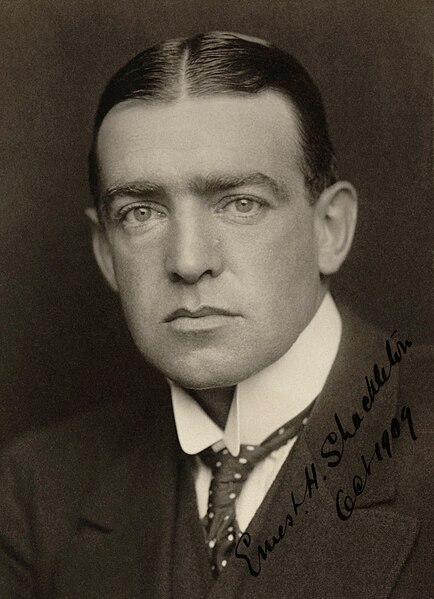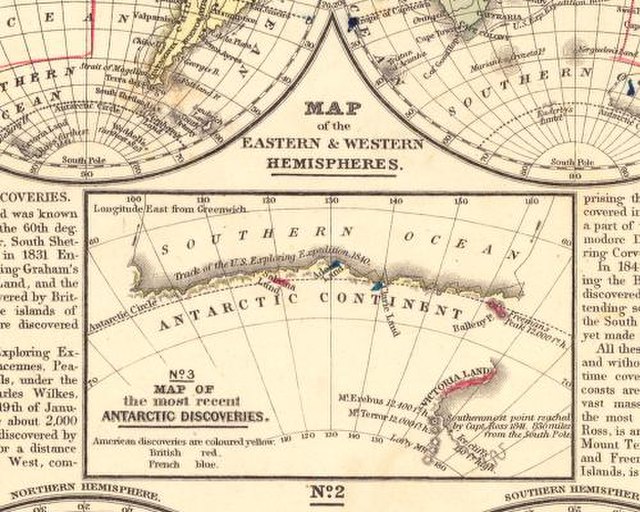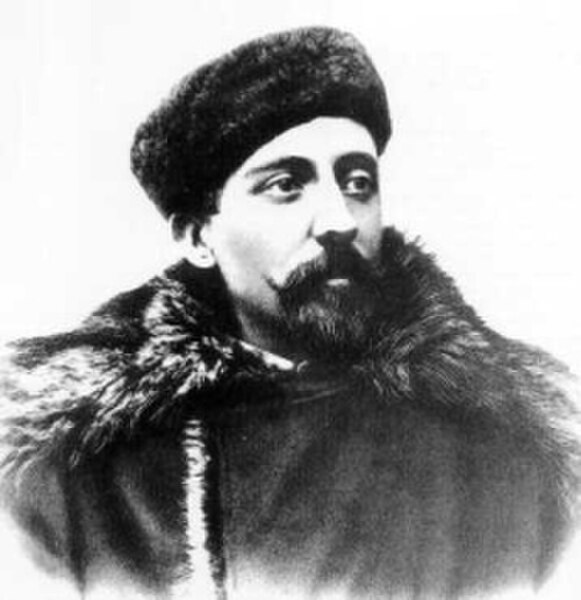The Discovery Expedition of 1901–1904, known officially as the British National Antarctic Expedition, was the first official British exploration of the Antarctic regions since the voyage of James Clark Ross sixty years earlier (1839–1843). Organized on a large scale under a joint committee of the Royal Society and the Royal Geographical Society (RGS), the new expedition carried out scientific research and geographical exploration in what was then largely an untouched continent. It launched the Antarctic careers of many who would become leading figures in the Heroic Age of Antarctic Exploration, including Robert Falcon Scott who led the expedition, Ernest Shackleton, Edward Wilson, Frank Wild, Tom Crean and William Lashly.
The expedition ship RRS Discovery in the Antarctic alongside the Great Ice Barrier, now known as the Ross Ice Shelf
Sir James Clark Ross, discoverer of the Ross Sea, the Ross Ice Shelf and McMurdo Sound
Captain Robert Falcon Scott, appointed leader of the Discovery Expedition
Ernest Shackleton, Third Officer on the Discovery
Heroic Age of Antarctic Exploration
The Heroic Age of Antarctic Exploration was an era in the exploration of the continent of Antarctica which began at the end of the 19th century, and ended after the First World War; the Shackleton–Rowett Expedition of 1921–1922 is often cited by historians as the dividing line between the "Heroic" and "Mechanical" ages.
The known Antarctic region after the 1819–1843 period of intensive exploration.
Left to right: Roald Amundsen, Helmer Hanssen, Sverre Hassel and Oscar Wisting after first reaching the South Pole on 16 December 1911.
The oceanographer Sir John Murray
Image: Adrien de Gerlache








